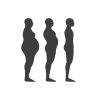- Empty cart.
- Continue Shopping
Understanding the Different Types of Cholesterol

Cholesterol is a waxy, fat-like substance that is found in the cells of your body and in the food you eat. While cholesterol is necessary for the normal functioning of the body, having too much of certain types of cholesterol can increase your risk of heart disease. To understand cholesterol better, it’s important to recognize the different types and their impact on your health.
The Three Main Types of Cholesterol
Cholesterol is transported in your blood by lipoproteins, which are particles made up of fats and proteins. The three primary types of cholesterol are:
1. Low-Density Lipoprotein (LDL)
Function: LDL cholesterol is often referred to as “bad” cholesterol because it carries cholesterol to the cells, including the cells that line the arteries.
Impact: When there is too much LDL cholesterol in the blood, it can build up on the walls of your arteries, forming plaques. These plaques can narrow the arteries and restrict blood flow, increasing the risk of heart disease, heart attacks, and strokes.
2. High-Density Lipoprotein (HDL)
Function: HDL cholesterol is often called “good” cholesterol because it helps remove LDL cholesterol from the bloodstream by transporting it to the liver for processing and removal from the body.
Impact: Higher levels of HDL cholesterol are associated with a reduced risk of heart disease. It acts as a protective factor by preventing the buildup of LDL cholesterol in the arteries.
3. Very-Low-Density Lipoprotein (VLDL)
Function: VLDL cholesterol is similar to LDL cholesterol but contains a higher proportion of triglycerides, another type of fat.
Impact: Elevated VLDL cholesterol levels are often associated with an increased risk of heart disease, as it can contribute to the buildup of plaques in the arteries.
Total Cholesterol and Cholesterol Ratios
In addition to understanding the individual types of cholesterol, healthcare providers often assess total cholesterol and cholesterol ratios to gauge a person’s risk of heart disease. These include:
1. Total Cholesterol
Total cholesterol is the sum of all cholesterol in your blood, including LDL, HDL, and VLDL cholesterol.
Recommended levels: For adults, the desirable total cholesterol level is typically less than 200 milligrams per deciliter (mg/dL).
2. LDL to HDL Ratio
This ratio compares the levels of LDL cholesterol to HDL cholesterol in your blood.
Recommended ratio: A lower LDL to HDL ratio is considered healthier. A ratio of 3.5 or lower is typically considered desirable.
3. Triglyceride to HDL Ratio
This ratio compares triglyceride levels to HDL cholesterol levels in your blood.
Recommended ratio: A lower triglyceride to HDL ratio is considered healthier. A ratio of 2 or lower is often recommended.
Factors That Influence Cholesterol Levels
Several factors can influence your cholesterol levels, including:
- Diet: Consuming a diet high in saturated and trans fats can raise LDL cholesterol levels.
- Physical Activity: Regular exercise can increase HDL cholesterol and lower LDL cholesterol.
- Genetics: Some people have a genetic predisposition to high cholesterol levels.
- Age and Gender: Cholesterol levels tend to rise with age, and men tend to have higher cholesterol levels than premenopausal women.
- Medical Conditions: Conditions like diabetes, obesity, and kidney disease can affect cholesterol levels.
- Medications: Certain medications can impact cholesterol levels, both positively and negatively.
Managing Cholesterol
Maintaining healthy cholesterol levels is essential for heart health. Here are some lifestyle changes and medical interventions that can help manage cholesterol:
1. Diet
- Eat a heart-healthy diet rich in fruits, vegetables, whole grains, and lean proteins.
- Limit saturated fats and trans fats found in fried foods, processed snacks, and fatty cuts of meat.
- Increase dietary fiber intake to help lower LDL cholesterol levels.
2. Exercise
- Engage in regular physical activity to boost HDL cholesterol and lower LDL cholesterol.
3. Medications
- In some cases, healthcare providers may prescribe cholesterol-lowering medications such as statins to manage high cholesterol levels.
4. Regular Check-Ups
- Get regular cholesterol screenings to monitor your levels and assess your risk of heart disease.
in Conclusion, Understanding the different types of cholesterol and their impact on your health is the first step in managing your cholesterol levels effectively. By making lifestyle changes and working with your healthcare provider, you can take proactive steps to maintain a healthy cholesterol profile and reduce your risk of heart disease.








